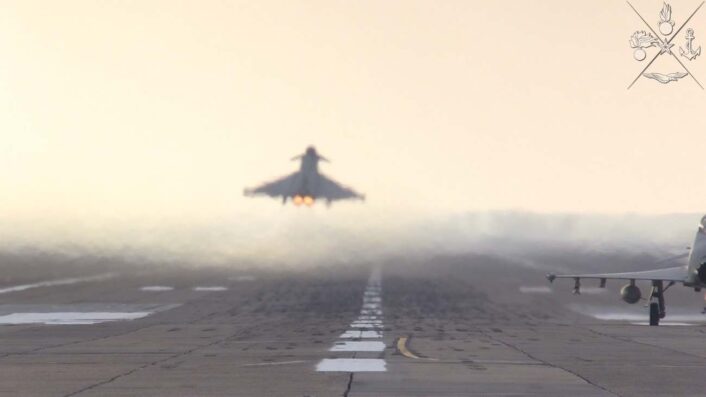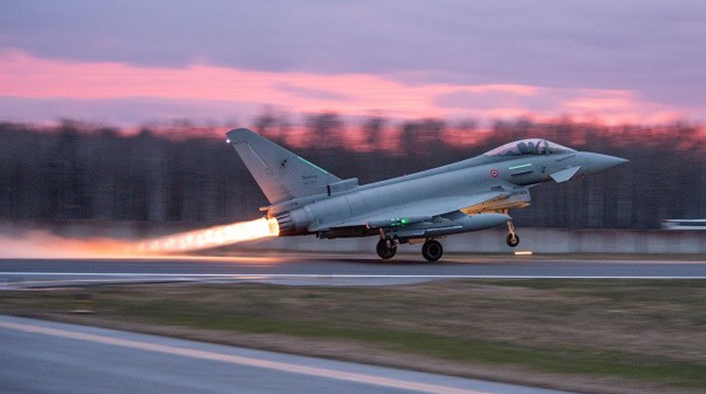The Italian and German Air Force jointly support QRA (Quick Reaction Alert) from Mihail Kogalniceanu Air Base, Romania.
From mid-February, eight Eurofighter Typhoons of the Aeronautica Militare and six Eurofighters of the German Air Force’s Taktisches Luftwaffengeschwader 74, jointly operate from Mihail Kogalniceanu Air Base, Romania, supporting NATO’s eAPA-S (enhanced Air Policing Area-South) mission, to protect the allied airspace in the Black Sea region, where tensions with Russia are at their highest since the Cold War years following the invasion and the war underway in Ukraine.
The Italian F-2000s are deployed to Romania since December as part of the Task Force Black Storm, led by the 36° Stormo (Wing), and supported by personnel from all the Italian Air Force air defense wings: the 4° Stormo from Grosseto, the 36° Stormo from Gioia del Colle, the 37° from Trapani and the 51° from Istrana. In accordance with the “plug & fight” concept, the German Eurofighters are fully integrated with the Italians contributing personnel and assets to the QRA (Quick Reaction Alert) service as part of a bilateral collaboration agreement between the two countries.
The QRA is carried out jointly, with mixed aircraft, personnel and pilots belonging to both services. The first joint A-Scramble (Alert Scramble) was launched on Mar. 2, 2022, the fourth one has been launched less than two weeks later, the ItAF announced on Mar. 14, 2022.
Once again, the Italian and German Eurofighters were scrambled by the NATO CAOC in Torrejon Spain, following a potential intrusion into the airspace under the responsibility of Romania by an unauthorized aircraft.

Once airborne, the aircraft established a Combat Air Patrol (CAP) inside the Romanian FIR (Flight Information Region) before being cleared to RTB (Return To Base). This is also, pretty much, the “script” of all the previous QRA launches: aircraft are scrambled when “non-NATO” traffic approaches NATO airspace; the interceptors remain in CAP station to monitor the area of competence and dissuade traffic in the area. VIDs (Visual Identifications) are usually not required.
The Air Policing mission is extremely important in this period, especially on the border with Ukraine, considered the risk of Russian Air Force aircraft and drones intruding into NATO airspace.
On Mar. 10, 2022, at 23:01 CET, an unidentified Soviet-era Tupolev Tu-141 Type 2 unmanned aerial vehicle (UAV), with up to 120 kg of explosive crashed in Zagreb, Croatia, after flying through Romanian, Hungarian and Croatian airspace. On Mar. 14, a Russian UAV reportedly crashed in Romania.
A Russian Orlan-10 UAV reportedly crashed in Romania. https://t.co/lQ5ATvNJ9a pic.twitter.com/JtvbR4MNiq
— Rob Lee (@RALee85) March 14, 2022
On Mar. 15, the Ukrainian military said it spotted a Russian surveillance drone crossing into Poland before reentering Ukrainian air space, where it was shot down.









